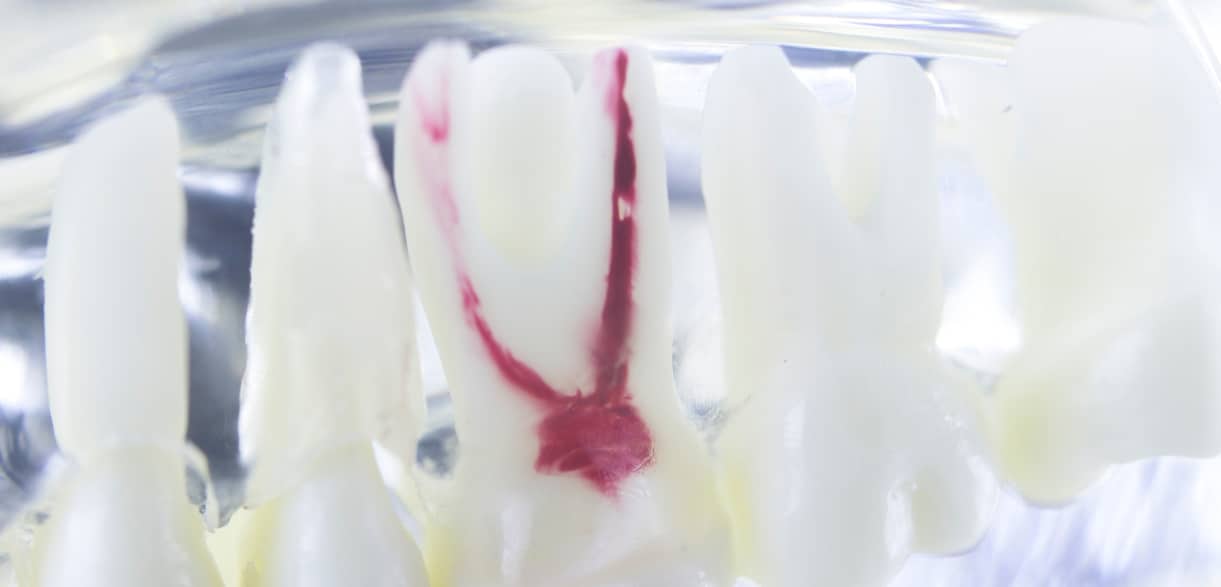
Root canals are a frequently performed dental procedure, with over 15 million conducted annually in the United States, as reported by the American Association of Endodontists. However, should the possibility of a root canal infection concern you? Are there potential complications post-root canal that demand your attention? Let’s understand the key indicators of the infection, the underlying causes, and the treatment procedures.
What Are Root Canal Infections?
Root canal infections can arise when the inner layers of a tooth, including the enamel, dentin, and pulp, become compromised. The enamel forms the sturdy outer surface, while the dentin is a porous tissue beneath. The pulp, located at the tooth’s center, houses nerves, blood vessels, and odontoblasts responsible for tooth health and growth.
Root canal procedures become necessary when tooth decay or injuries cause infection or damage to the pulp. By removing the infected or damaged pulp, root canals aim to save teeth and are generally considered safe. Although the infections are not prevalent, there remains a slight risk of a tooth becoming infected even after undergoing a root canal.
What Signs Indicate A Root Canal Infection?
Experiencing some pain immediately following a root canal is typical. It’s normal to feel discomfort and tenderness that may persist for a few days, and mild pain might linger for up to a week. If intense pain persists beyond a week, especially if it remains uncomfortable or worsens compared to before the procedure, it’s crucial to consult your dentist promptly. The three signs of root canal infection are:
Lingering and Intense Toothache
The most common and noticeable indicator of a potential root canal infection is a persistent and severe toothache. Unlike temporary sensitivity or mild discomfort, the pain associated with an infection tends to linger and intensify over time. You may experience heightened sensitivity to hot or cold temperatures, and the pain can often disrupt your daily activities, making it difficult to ignore.
The reason behind the pain is the infection reaching the nerves in the pulp. As the infection progresses, the pressure within the tooth increases, leading to increased pain. If you notice persistent, severe tooth pain, especially when accompanied by other symptoms, it’s a clear signal to seek prompt dental attention.
Swelling and Discomfort in the Gums
Swelling around the affected tooth and discomfort in the surrounding gums are potential signs of an infection. The infection can lead to the formation of an abscess, a pocket of pus that develops at the root of the tooth. This abscess can cause swelling in the gums, creating a tender and painful area.
The swelling may be accompanied by redness, and you might even notice the formation of a pimple-like bump on the gums, known as a gum boil. This is a visible indication that the infection is progressing and the pus is seeking an outlet. Ignoring these signs can result in the spread of the infection to the surrounding tissues, potentially leading to more severe complications.
Discoloration of the Tooth
Changes in the color of a tooth can be a subtle yet significant indicator of a root canal infection. An infected tooth may appear discolored, taking on a grayish or dark yellow hue. This discoloration is often a result of the breakdown of internal tissues and the accumulation of debris within the pulp chamber.
While tooth discoloration can have various causes, such as stains from food or drinks, trauma, or aging, discoloration accompanied by persistent pain or other symptoms should raise concern. If you notice a change in the color of a tooth, particularly if it’s coupled with other signs of infection, seeking professional dental evaluation is crucial for accurate diagnosis and timely intervention.
How To Prevent Root Canal Infection?
To prevent infections and maintain oral health post-procedure, consider the following tips:
- Brush and floss regularly, aiming for at least twice a day.
- Use a mild, antiseptic mouthwash in the initial days following a root canal, continuing its use regularly.
- Manage soreness with over-the-counter pain medication like ibuprofen.
- Schedule a prompt return to your dentist for the final crown or permanent restoration, sealing the root canal and safeguarding your tooth.
- Attend dental cleanings at least twice a year to ensure overall tooth health and early detection of decay or infections.
- Act swiftly by consulting your dentist if you observe any early signs of infection.
In the treatment of a root canal infection, a root canal retreatment may be recommended to provide the tooth with a second opportunity for healing. This retreatment closely resembles the initial root canal procedure.
How To Treat A Root Canal Infection?
During retreatment, your dentist or root canal specialist is likely to undertake the following steps:
- Examine the area around the root canal for infected or necrotic tissue, often aided by X-rays.
- Administer local anesthesia to numb the region surrounding the affected tooth.
- Place a protective barrier around the tooth to safeguard the gums and mouth.
- Utilize a dental drill to access the pulp and root canal area by penetrating the filling and enamel.
- Thoroughly clean the infected or dead tissue and remove any old root filler material or medication.
- Dry the area and fill the newly cleaned space with a secure, latex-based polymer filler known as gutta-percha.
- Apply filling material, such as amalgam or composite, to protect the tooth and facilitate healing from the infection.
- If necessary, sculpt away some of the outer enamel and affix a permanent crown over the tooth to guard against potential future infections.
While root canal infections are rare, they are still possible. It is important to closely monitor for any early signs of infection following a root canal procedure. If you suspect that your root canal has become infected, it is important to promptly schedule an appointment with your dentist in Midwest City to receive advanced root canal therapy.


